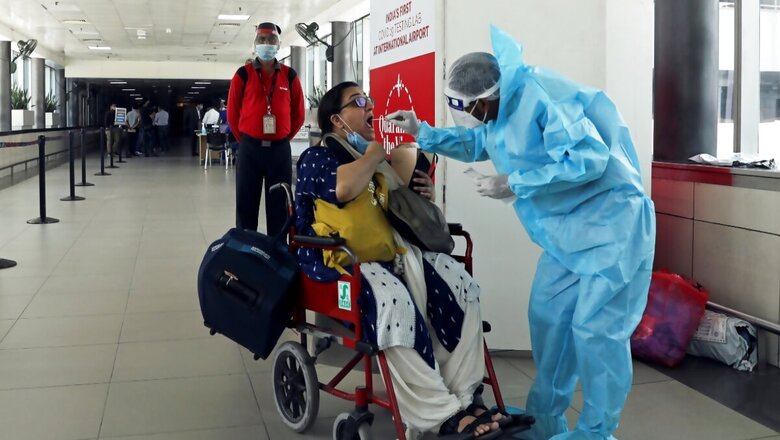
views
Is there one or not? What is the second wave of the coronavirus infection? When did the first wave end if the second has started? These are questions that we may not really have the answer to. Not now, at least.
Dr Randeep Guleria, member of India’s National Task Force on Covid-19, director of Delhi’s AIIMS and a leading pulmonologist told CNN-News18 about some parts of the country witnessing a ‘second wave’ of infection.
While there’s no clear definition of what constitutes an epidemic wave, a wave by definition would imply a rising number of sick individuals, a defined peak, and then a decline.
So has that happened in India? In some places, says Dr Guleria. “In some areas, there is Covid-19 behaviour fatigue. People are now tired of taking safety measures and in Delhi, they can be seen without masks and gathering in crowds,” he said. This has led to an increase in the number of Covid-19 cases.
Dr Guleria also said there will be a rise in the number of cases for some months before the curve is flattened, adding that although we will see a large number of cases in absolute numbers, per million cases will be low.
In June, Chief Scientist of the World Health Organization Soumya Swaminathan said a second wave of infection is a very real risk as the virus is still present in the community. “We don’t know if it will be a second wave, a second peak or a continuing first wave in some countries,” she had said.
But India has ducked this, claims Professor Balram Bhargava, Director General of the Indian Council of Medical Research (ICMR). “US and countries of Europe had a peak, then they came down and there is a second wave occurring there. We took learning from that. We distributed the curve in a way that we didn’t have many deaths. It was because we had an effective lockdown. We didn’t have a huge peak at all,” he told News18.
At the beginning of the pandemic, Joint Secretary in the ministry of Health, Lav Agarwal, claimed that in India, the peak may never come. India’s Covid-19 graph has indicated that cases have not technically plateaued as is expected in a virus. Not yet and the graph is only spiralling.
“Things remain conjectures at best. Since India is a large country that consists of several states, many of which are at the varying stages of pandemic, it is quite likely that India will see its cases rising slow and steady for a very long time and might plateau. This is because even as current high burden states peak or plateau, there are new ones where cases are still rising exponentially. So it really doesn’t make sense to talk about a peak for the country as a whole,” says health economist Rijo M John.
The government, too, is on record to say that different places may see a peak at different times. But there is nothing to show that we are at a peak yet, claims the government. Clearly, no cases peaking also means no scope for cases to plateau either. On Tuesday, the government explained how different areas are behaving distinctly in India. Maharashtra rose from 6,000 to 21,000 cases per day between July and September. There is some stabilisation in Karnataka. Uttar Pradesh has seen an increase in cases from 829 to 6,477. There are initial signs of decline in Tamil Nadu, Rajesh Bhushan, Union Health Secretary, said.
“The first wave has not completely subsided in areas with high transmission (from the beginning such as Mumbai and Delhi). Without touching the baseline or at a lower minimum, we cannot technically say there is a second wave. Depends on how one looks at the data. In my opinion, this is continuation of first wave,” says Dr Giridhar Babu, epidemiologist and member of the National Task Force against Covid-19.
“States and regions within each state are peaking at different points of time. This depends on temporal differences of introduction of infection in a region, population movement and compliance of using mask and distancing etc. Therefore, India’s total count might plateau for some time rather than one single peak in the form of an inverted V,” he says
India is reporting close to 90,000 cases and more every day. The cases are increasing and so are the deaths that have been consistently well above the 1,000 mark for 15 days in a row. Even cities like Delhi that saw minor respite in reporting new cases have not seen significant decline in hospitalisation rates or cases plateauing. In that sense, the claim of a second wave from a section within the government and counter claims of ‘distributing the curve’ have added intrigue to the debate around Covid-19 in India and what to expect in the days to come.
The Covid-19 pandemic is often compared to the 1918 H1N1 influenza pandemic, which had at least three waves over the course of a year. In that sense, Covid-19 is very different.



















Comments
0 comment